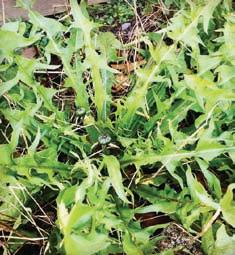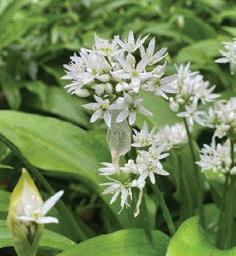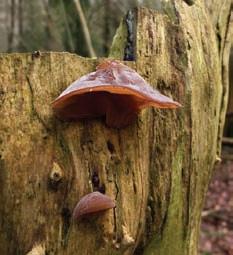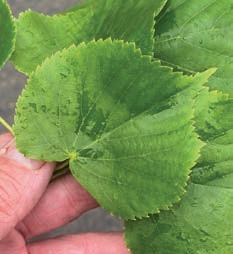
6 minute read
FINE FORAGING
Forage harvester
Lockdown has allowed much more time for exploring the natural landscape and this has resulted in an increased interest in green spaces and their restorative qualities. Simon Horsford met up with the Cotswold Forager, Rob Gould, about how the natural environment can be productive in another way, as a source of ingredients
Advertisement
If there was ever a time to re-engage with nature, it has been during these uncertain times. Hence the reason I was with Rob Gould, aka the Cotswold Forager, tramping through several fields in Freshford, just outside Bath, on a damp morning last autumn.
Gould is a passionate forager and lover of the outdoors and keen to spread the word on his walks. As his Facebook page says: “I see foraging as a way of getting people to think about and develop a love for the wild food…as well as helping to grow a greater appreciation and understanding of the natural world as a whole.”
Wearing shorts and carrying the requisite forager’s knife, pouch and hand lens (to inspect the pores in mushrooms), Gould looks the part too. As we chat and wander, he adds: “I think there is a growing interest from multiple avenues. It’s about getting back to our roots and being able to save a bit of money.
“There are also people who want to reconnect with nature and learn more about their locality, which has happened during Covid. There’s also increased interest in seasonality, too, and the way food is produced and the ethics of it.”
Soon after we set off, wandering by the River Frome, Gould points to some Himalayan Balsam, an invasive plant all of which is edible. It’s great for salads, I learn, with the seeds having a nutty texture. Like all the plants we discuss, each has a binomial name (in this case Impatiens glandulifera) but a multitude of local names – this one is also colourfully referred to as Gnome’s Hatstand, Ornamental Jewelweed and Policeman’s Helmet). As with many such plants it comes with a warning, though, as it has a high mineral content and shouldn’t be consumed in great quantities.
He then spots some sweet woodruff (Galium odoratum) also known as Wild Baby’s Breath. It’s related to sticky willy, and according to Gould can be used for infusing schnapps or ice cream. Unsurprisingly, there is an abundance of nettles too – “high in nutrients, flavonoids and antioxidants”, says Gould.”Use it like spinach or as a tea,” he adds; the leaves are best when tender, so pick them in mid-spring.
Gould, who lives in Cheltenham with his partner and two young sons, has been a forager for some 20 years, taking it up via working in bars and restaurants, horticultural college, landscape gardening and charity work, although initially the greater appeal lay in wild camping. When I first started getting interested, Hugh FearnleyWhittingstall was doing Cook on the Wild Side, “so I was thinking this is quite cool and it was like the perfect timing.”
Another early inspiration was an old library copy of Richard Mabey’s renowned Food for Free, written in 1972. It now seems ahead of its time and a book in which the author pointed out: “When we forage, we truly know the organism we choose to collect, its mode of life, its beauty, its value and its season, and in a way
When we forage we truly know the organism we choose to collect... we feel we deserve it, we own it ❝
Photograph by Adam Lewis
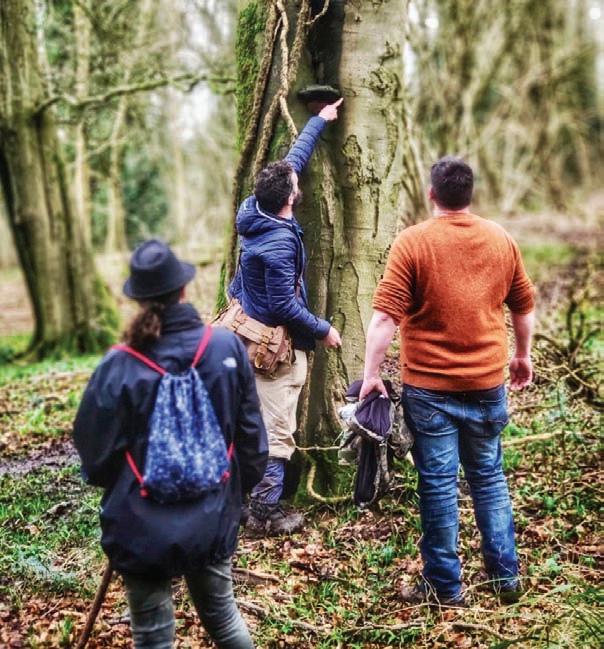
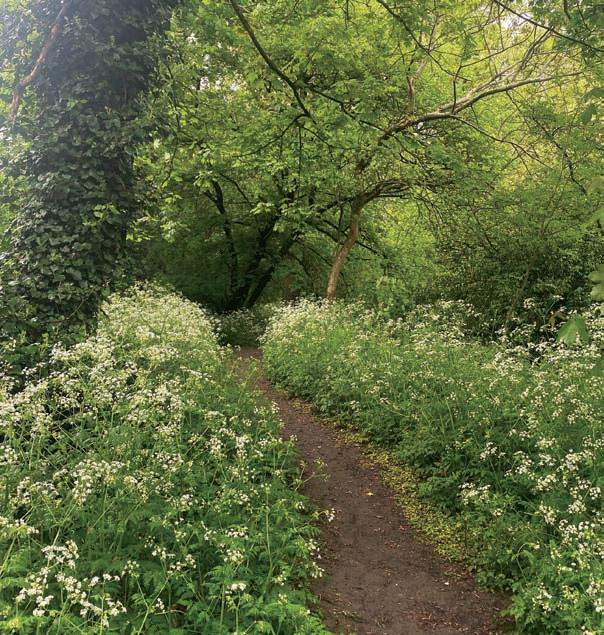

unobtainable from food that is bought, we feel we deserve it, we own it.”
It’s a philosophy that rings true with Gould, who in the past has said that as people have become increasingly detached from nature and the outdoors, foraging can be way of addressing this dislocation and also give us something back by making us less reliant on others for a food source. “I also like the intensity of flavours that you can’t find in things you buy in the supermarket,” he adds.
We press on veering to and from the riverbank as Gould explains that the meeting of two habitats are the most productive areas for foragers – unsurprisingly, perhaps, because “you’ve got twice as much chance of finding something interesting.” The edge of a forest or by the side of a river can be very productive as are pasture and meadow land and hedgerows.
“I also do a lot of urban foraging,” says Gould. “I wish people would get more into it even as way of engaging more with their local habitats.”It can prompt the odd reaction from the locals, though. “I do get some strange looks if I’m on a footpath reaching for something in a tree.”
Gould’s work takes him beyond just foraging walks with the public as he has fostered collaborative events with restaurants and charities. He also has an interaction with The Re-Wild Project, a social enterprise in the Forest of Dean And he’s been approached by a countryside charity, the CPRE, who want to start doing foraging walks for their members and the public.
Elsewhere, Gould has held foraging tours in Tuscany, where the activity seems to be more ingrained in the culture as it is elsewhere in Europe. “They have retained that knowledge and it’s more a part of the folklore, which to a certain extent we have lost, although more people know about it now.”
Nature, the outdoors, sustainable food sources, even mindfulness, foraging ticks a lot of boxes during these environmentally conscious and more restricted times. n
WHAT TO LOOK OUT FOR IN SPRING by Rob Gould
Dandelion leaves: Grown as a salad leaf in the past, these have a bitter taste akin to radicchio, or chicory. The youngest leaves can be eaten as they are, but for older leaves, soak for a few hours in cold water to remove some of the bitterness.
Stinging nettle: Yep, stingers. The bane of many childhoods, these are surprisingly delicious and can replace spinach in virtually anything. In fact, if you go in with an open mind, the flavour is far superior. Pick the youngest few pairs of leaves, at the top of the plant, and enjoy. Just like spinach, one cubic metre of nettles will cook down to approximately a quarter of a tablespoon!
Wild garlic: Yes, I know its a bit obvious, but for a good reason. These, for me, are the harbinger of spring, and are edible in their entirety –try making a pesto by just smashing up some unopened flower buds in a pestle and mortar with a touch of oil, cheese and walnuts.
Wood ear mushrooms: For those not in the know, these are all about the texture, which for some might be horrible, like a bland, firm jelly. But dehydrate them on a plate in a warm room, then rehydrate them in a tasty liquid, like soy or Worcestershire sauce, even alcohol and you may just change your mind about them...
Lime leaves: No, not those ones, I’m talking about the leaves of the native lime/ linden tree. Fresh and young they are a deliciously saladlike leaf; as they mature they can be cooked as a vegetable.
cotswoldforager.co.uk
